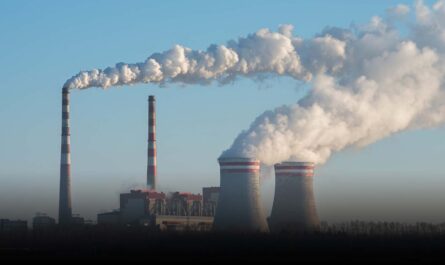Types of Gas Sensors
There are different types of gas sensors based on their working principle and the gases they can detect. Some common gas sensor technologies include:
Electrochemical Sensors
Electrochemical sensors work on the principle of oxidizing or reducing the target gas at an electrode and generating a current signal proportional to the gas concentration. They are suitable for detecting combustible, toxic and odorant gases like carbon monoxide, hydrogen sulfide, methane etc. due to high sensitivity and fast response. However, their lifetime depends on consumable components like electrolytes.
Semiconductor Sensors
Semiconductor gas sensors utilize the change in electrical conductivity of metal oxide semiconductors when exposed to target gases. Common semiconductor materials used are tin dioxide, tungsten oxide and zinc oxide. They can detect various combustible, toxic and industrial gases like LPG, ammonia, hydrogen etc. Semiconductor sensors have long life but their sensitivity reduces over prolonged usage.
Infrared Sensors
Infrared gas sensors work on the principle of infrared absorption spectroscopy where each gas possesses a unique infrared absorption spectrum. They detect gases like carbon dioxide, methane, CFCs etc. by measuring changes in infrared light passing through the gas sample. Infrared sensors provide identification of complex gas mixtures but are expensive.
Catalytic Sensors
Catalytic Gas Sensor operate based on an oxidation or reduction reaction catalyzed by a platinum coil or bead in the sensor. They are used for detecting combustible gases like LPG, hydrogen, ethanol etc. Catalytic sensors have long life and withstand poisons effectively but their sensitivity depends on catalyst activity.
Applications of Gas Sensors
Gas sensors find application in various critical industries and sectors where continuous gas monitoring and leak detection are important:
Indoor Air Quality Monitoring
Gas sensors are employed in domestic and commercial buildings to monitor levels of oxygen, carbon dioxide, carbon monoxide and other gases. This helps regulate ventilation and ensure good indoor air quality for occupant health and safety.
Industrial Gas Detection
Toxic and combustible gas detectors using sensors safeguard workers in petrochemical plants, oil and gas industries, wastewater treatment plants etc. where hazardous gases may be present. Early leak detection prevents accidents.
Automotive Applications
Oxygen and hydrocarbon Gas Sensor help automotive engines run efficiently by monitoring exhaust gas composition. Meanwhile, carbon monoxide detectors in vehicles warn drivers of deadly leaks from exhaust systems into cabins.
Home Safety Appliances
Domestic smoke and gas detectors, equipped with photoelectric, ionization or gas sensors, sound alarms when smoke/fire or dangerous gas levels like CO are detected to alert residents for emergency evacuation.
Waste Management
Sensors check biogas generated at landfills and wastewater treatment plants for methane, hydrogen sulfide content before distribution to ensure safe gas quality standards.
Advancements in Gas Sensor Technology
The growing need for accurate, reliable and cost-effective gas detection has spurred continued innovation in gas sensor design:
– Miniaturized sensors: Development of MEMS fabrication allows production of compact, portable gas detection instruments and sensor arrays.
– Low power circuits: New integrated circuit designs coupled with energy harvesting enable long-life, maintenance-free gas monitoring nodes for IoT applications.
– Selective sensing: Use of nanomaterials like carbon nanotubes, graphene increases sensor selectivity for detecting target gases in complex mixtures.
– Wireless connectivity: Integration of gas sensors with wireless communication modules like WiFi, Bluetooth, LoRaWAN facilitates remote monitoring over networks.
– Artificial intelligence: Pattern recognition algorithms with sensor data help identify unknown gases and predict sensor performance degradation over time with higher accuracy.
*Note:
1. Source: Coherent Market Insights, Public sources, Desk research
2. We have leveraged AI tools to mine information and compile it



